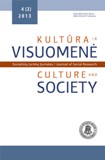Partnerystės atkūrimas po skyrybų: tendencijos ir socialinė diferenciacija
Reconstitution of partnership after the divorce: trends and social differentiation
Author(s): Aušra MaslauskaitėSubject(s): Cultural Essay, Political Essay, Societal Essay
Published by: Vytauto Didžiojo Universitetas
Keywords: Partnerystės atkūrimas po skyrybų; Skyrybos; Išsiskyrusios moterys; Kohabitacija; Reconstitution of partnership; Divorce; Divorced women; Cohabitation
Summary/Abstract: Straipsnyje siekiama nustatyti išsiskyrusių moterų, turinčių vaikų, partnerystės atkūrimo tendencijas ir jas sąlygojančius demografinius bei socialinius struktūrinius veiksnius Lietuvoje. Tyrimas yra grindžiamas sociodemografinio „Kartų ir lyčių tyrimo“ jungtinės dviejų bangų (2006 m. ir 2009 m.) duomenų bazės analize. Paaiškėjo, kad Lietuvoje išsiskyrusios moterys dažniau nesukuria nei sukuria pakartotines partnerystes, o šios tendencijos išlieka stabilios vertinant tam tikrus kalendorinius laikotarpius. Per pastaruosius keturis dešimtmečius iš esmės pakito pakartotinių partnerysčių tipas, o kohabitacija tapo vyraujančiu tipu dar paskutiniajame sovietinio laikotarpio dešimtmetyje. Partnerystės atkūrimo po skyrybų tikimybę reikšmingai mažina du veiksniai – vyresnis moterų amžius skyrybų metu ir vaikai iš ankstesnės santuokos. The article explores the trends of partnership reconstitution after the divorce and social differentiation of this process in Lithuania. The research is based on the pooled dataset of the two waves of Generation and Gender Survey (2006 and 2009) and is limited to the analysis of the subpopulation of divorced females with the underage children. Methods of the analysis include descriptive statistics and event history analysis. Research proves that the level of repartnering of Lithuanian females is relatively low compared to that of males and females in other countries of Central and Eastern Europe. Moreover, the level and tempo of repartnering remained almost stable for the last four decades. The divorce cohorts of the 1970s demonstrate similar repartnering pattern as the younger divorce cohorts. Cohabitation became a dominant model of repartnering during the Soviet decades and reconstitution of partnership in marriage became very selective in the last decade. Chances to reconstitute the partnership are limited by the two demographic factors: age at divorce and the presence of children from previous marriage. Divorce at higher age limits the chances to form the new partnership after the divorce and children from previous marriage significantly decrease risk of the entry into a new union if controlled for other socio-demographic factors. Research results prove that repartnering as a strategy to overcome negative economic outcomes of divorce is not equally accessible to all divorced females in Lithuanian society. Those who occupy the economically most vulnerable positions, i. e. divorced women with children, have the most limited chances.
Journal: Kultūra ir visuomenė: socialinių tyrimų žurnalas
- Issue Year: IV/2013
- Issue No: 2
- Page Range: 103-117
- Page Count: 15
- Language: Lithuanian

